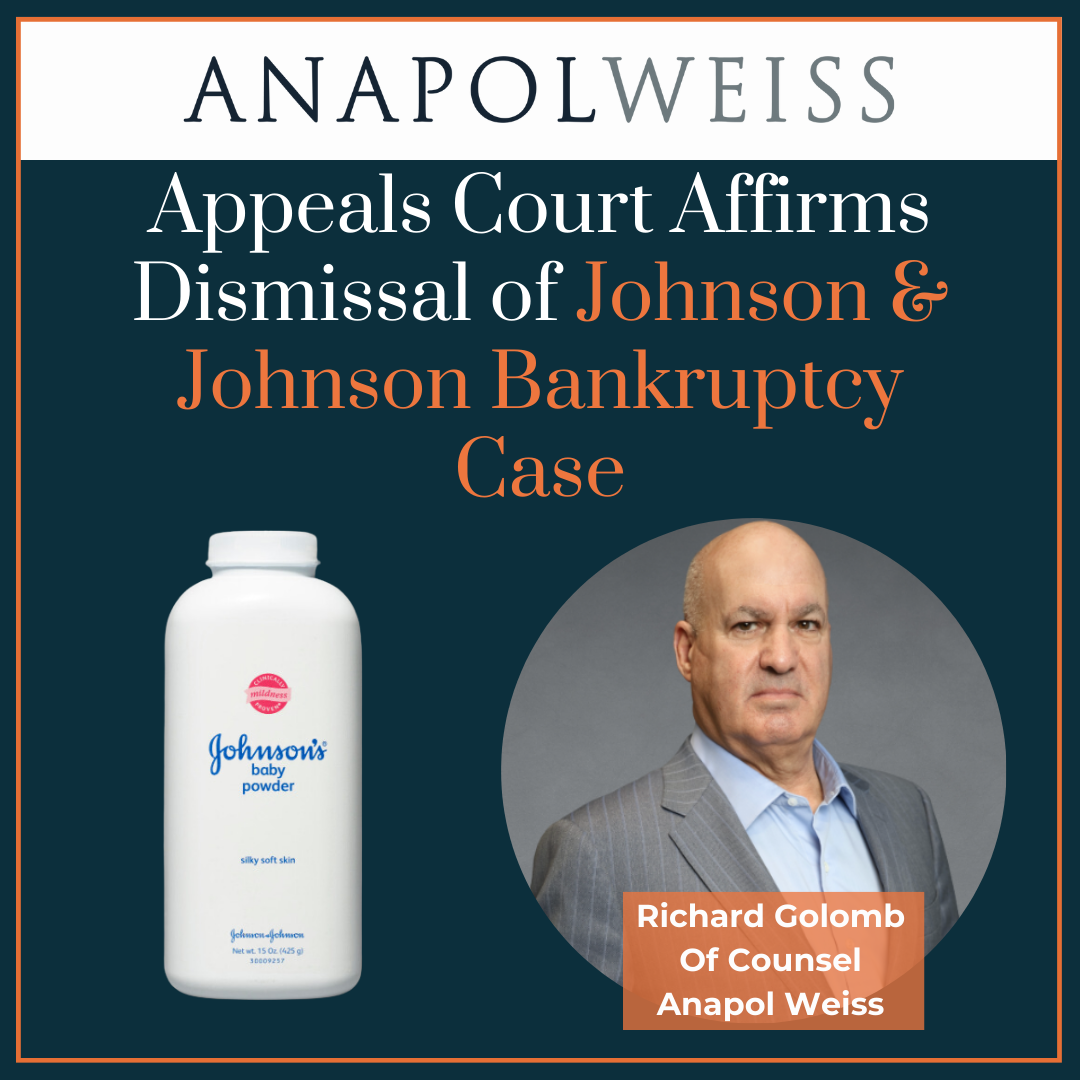Last week, the United States Court of Appeals for the Third Circuit affirmed the Bankruptcy Court’s dismissal of LTL Management, LLC’s (“LTL”) bankruptcy case. The Third Circuit’s decision is the latest development in Johnson & Johnson’s attempt to use bankruptcy as a strategy to settle all claims involving allegations that the company’s talcum powder caused cancer due to asbestos exposure. Richard Golomb, an Of Counsel attorney with Anapol Weiss, represents more than 1300 women in their lawsuits against Johnson & Johnson. The bankruptcy case, which was Johnson & Johnson’s second bankruptcy action, was dismissed for want of good faith given that LTL was not actually in financial distress.
Shell company, LTL, was formed in 2021 and received a funding agreement directly obligating Johnson & Johnson to cover LTL’s talc liabilities and bankruptcy expenses up to $61.5 billion. LTL promptly filed for Chapter 11 bankruptcy to resolve all talc claims, but the case was dismissed on the basis that well-established Third Circuit case law bars a bankruptcy absent financial distress. As a result, LTL amended the funding agreement with Johnson & Johnson to reduce the funding to $30 billion, thereby placing LTL in financial distress.
LTL filed for Chapter 11 bankruptcy once again. However, the Bankruptcy Court concluded that, even with the substantially reduced funding agreement, LTL was still not financially distressed and therefore not eligible for bankruptcy. The Court reasoned that LTL’s talc liability would not exceed its forced liquidation value. On appeal, LTL argued, inter alia, that the Bankruptcy Court erred in its fact-finding by undervaluing LTL’s potential liability given that it did not consider likely blockbuster verdicts that would increase LTL’s exposure. LTL further argued that, even if the Bankruptcy Court did not err, it misread the Third Circuit’s reasoning from the previous bankruptcy dismissal as providing an “insolvency standard…looking only to current conditions.”
The Third Circuit was not persuaded by LTL’s arguments. It concluded that LTL’s argument concerning the likelihood of higher liability due to potential massive verdicts was speculative, and the Bankruptcy Court did not err in its fact-finding. The Third Circuit also found that the Bankruptcy Court did not misread its reasoning from the previous bankruptcy dismissal and was not only considering current conditions when assessing LTL’s claim of insolvency. Rather, there simply was no evidence that LTL was under insolvency-based financial distress considering its assets exceed its liabilities.


